Have you ever wondered who invented coffee, its origins, and how this fragrant brown liquid took over the world?
The first people thought to brew and drink coffee were Ethiopians at least 1,100 years ago. Coffee grown around the world traces its origin to Ethiopia, spreading to the Arabian Peninsula, Middle East, India, Asia, Europe, and East Africa.

Since then, the history of coffee has been intertwined with the wars and economic booms of many countries.
In this article, we’ll take you on a wild journey to discover who invented coffee, its history, and how this drink came to take over the world.
So grab yourself a cup of coffee, settle down, and read on!
What Is Coffee?
As you brew your daily cup, you may have asked yourself, “What exactly is coffee?’ Coffee consists of roasted beans (seeds) brewed in hot water. These coffee beans are the processed versions of the seeds from the coffee trees. These seeds are separated from the fruit to yield a raw product: unroasted green coffee, which is heat-treated to produce roasted beans.
Arabica and Robusta are two prominent coffee beans and both of them hold some unique health benefits that you can enjoy.
In the end, it’s important to remember that brewed coffee isn’t just one drink; it comes in tons of different flavors and varieties.
As a coffee aficionado, there are so many different tasting notes you can focus on. Sure, there’s the vibrant coffee with high acidity and wine-like notes from Ethiopia, Kenya, and Colombia, but there’s also the bitter notes typical of Robusta varieties, originating in Indonesia and Uganda.
There are also deep chocolatey and sweet caramel notes prominent in Brazilian and Vietnamese coffee, and interestingly, some coffees with a floral, yes, you read that right, floral taste.
You can get a cup of coffee with an undertone of roses from Rwanda or rose-hip tea from Colombia, or you can try honeysuckle in a cup from Tanzania or gardenia from Costa Rica.
The next time you’re at your favorite local café looking for something new to try—and maybe even a little out of the ordinary—ask for one of these floral coffees!
They might just be your new favorite thing!
The Discovery of the Coffee Plant in Ethiopia
When it comes to “who invented coffee,” there is a consensus that coffee originated in Ethiopia.
If you haven’t heard the story: an Ethiopian goat herder named Kaldi discovered coffee when he found that his herd became wired after eating the fruit of what would later be known as the coffee tree. However, there’s a fair debate about whether this story is even true. What is known is that the origin of the coffee plant is in the Kaffa Province of Ethiopia.
The legend says that curiosity got the better of Kaldi, and he took these bright red berries to a local monastery to ask them more about these strange red berries. The abbot, on receiving these coffee berries, proclaimed them to be of “devilish origin” and threw them into the fire.
However, after some time, the aroma of roasted coffee beans beguiled the other monks. They removed the roasted berries, and eventually, it is said, brewed and drank coffee.
From there, the story gets a little hazy!
Some say that a monk named Gregory saw Kaldi’s goats and took some of the berries back to his monastery. Others say that the same monk Gregory was imprisoned for smuggling the red cherries.
After his release from prison years later, he would use his newfound knowledge of coffee to open up a monastery and coffee shop in Constantinople (now Istanbul).

Yet another coffee origin myth stems from Yemen. It speaks of a Sufi disciple of Sheik Al-Shadhili Omar banished to a desert cave.
Hungry, he chewed red berries from a mysterious shrub but found them too bitter. He then roasted and boiled the berries, drinking the resulting liquid. To his surprise, the drink left him energized, and he used it as a miracle drug to cure many ailments.
Whichever story you believe, it seems that the coffee’s beginning is mired somewhere in these diverse, and no doubt, interesting origin stories.
The Spread of Coffee Beans into the Islamic World
You cannot discuss who invented coffee without discussing the history of coffee in the Islamic world.
By 900 AD, this new beverage had reached present-day Yemen and the Arabian Peninsula and was known as “qahwa,” which translates to wine.
Research indicates that the first record of the cultivation of coffee in the area dates back to the 15th century.
Coffee, a clean drink, was permitted for Muslims to consume instead of alcohol, which made sense because it helped them stay awake during the long hours of prayer, becoming an official Muslim drink.
As the Yemenis drank more coffee, they were prompted to cultivate and trade coffee rather than import it from Ethiopia. People made a custom of making coffee in their homes and enjoying it in public coffee houses known as “qahveh khaneh.”
What’s known is that, by the 16th century, the practice of boiling coffee had spread across the Middle East and A
abia. If you’ve ever traveled to the Mediterranean or the Middle East, and had Greek, Ethiopian, and Turkish coffee, you’ll have noticed how people there continue the traditions of boiling this beverage.
Coffee was not just a beverage in the Islamic world; it was an integral part of social tradition. This addictive beverage gave people, mostly men, a chance to congregate and socialize.
Over time, as Muslims made their annual Hajj to the holy city of Mecca, the knowledge of coffee spread among the pilgrims, making it a culinary institution across the Islamic world.
Coffee History in Asia
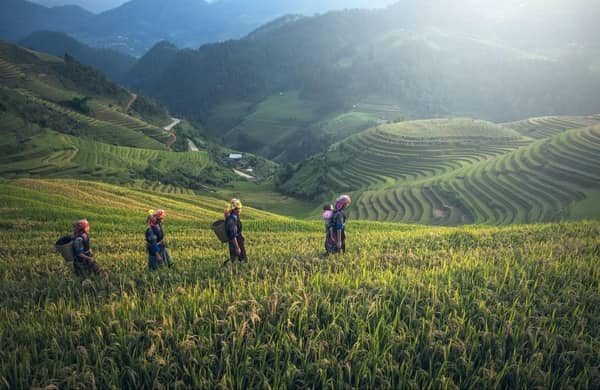
Ever holidayed in Bali, Thailand, Vietnam, and other parts of Southeast Asia? Had coffee there? Well, we can tell you that their delightful cup of java is to die for!
So, how did coffee get to Asia?
Well, while we really won’t know for sure who invented coffee, we do know who brought it to Asia in the latter half of the 17th century: The Dutch and the British.
Indonesia

At first, Arabica coffee plants were grown as cash crops to supply the European market—but conditions for local farmers were brutal and unprofitable.
The first seedlings were sent to Java, Indonesia from Ceylon (now Sri Lanka). Local farmers had to set aside 20% of their land for coffee cultivation under a Dutch labor system known as Cultuurstelse or offer the Dutch sixty days’ free labor.
Not meeting these quotas led to brutal punishments but made the Dutch the leading producers of coffee in the world, challenging the dominance of the Islamic world.
Today, it would interest you to know that Indonesia is one of the leading producers of coffee in the world, producing approximately 774.6 thousand metric tons in 2021.
Thailand
Although imperialism introduced coffee to Asia, in some countries the popularity of coffee took off much later and for very different reasons.
Farmers in Thailand and Myanmar had been growing opium poppy long before they learned of coffee. Both countries’ rulers hoped that a sustainable cash crop, such as coffee, would bring more prosperity and security to their regions.
The French first brought coffee plants to Thailand in the 17th and 18th centuries. However, it took nearly 300 years for coffee culture to take hold in the country.
It started with small-scale plantations on mountainsides, where the conditions proved favorable for growing high-quality Arabica beans.
Myanmar
In Myanmar, wild coffee trees grow high in the mountains. In 1885, Baptist missionaries brought Arabica seeds to Myanmar from India and began cultivating them high in the mountains near the Shan state capital of Taunggyi. As of 2019, 80% of Myanmar’s coffee is grown there.
Vietnam
It’s a pretty common misconception that coffee came to Vietnam via the French. The truth is actually much cooler: Vietnamese coffee became world-famous after the government, under the Doi Moi reforms of the 1980s, liberalized land ownership, which led to increased agricultural investment.
That boom in Vietnamese coffee exports has continued to this day, as has their innovation with it. Take egg coffee, for example: invented in 1946 during a wartime milk shortage, this beloved drink is just another example of how Vietnam’s history and its future are inextricably linked with coffee.
If you’ve never tried Vietnamese egg coffee, by the way, make a point of doing so–absolutely delicious!
The Rise of European Coffee Houses
If you’ve ever lived in Europe, or simply gone on holiday there, you’ll have noticed just how popular coffee is in almost every country in the continent.
From Scandinavia and Germany to Italy and France, coffee is an integral part of everyday life.
So, how did coffee get to Europe? What is the history of coffee there?
It would interest you to know that European travelers to the Near East brought backstories of a certain dark black beverage, and by the 17th century, coffee houses and coffee drinking were gaining popularity in Europe.
Although many people reacted with suspicion or fear at first, labeling it the “devil’s drink,” others totally embraced it. Eventually, even Pope Clement VIII took a sip and found it so satisfying that he gave his approval for coffee as a Christian beverage.
Coffee houses quickly became social hotspots in England, Austria, France, Holland, Italy, and Germany.
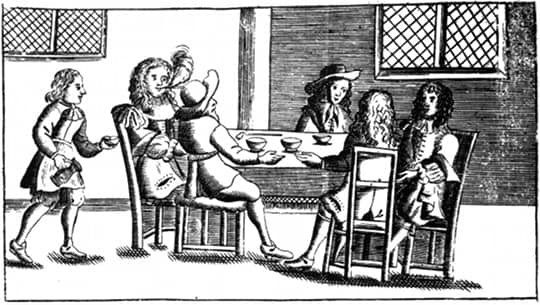
In England, the first coffee house opened in 1650, in Oxford, in a modern-day building known as The Grand Cafe. Soon, “penny universities,” so-called because the people paid a penny to purchase a cup of coffee and spend time engaging in stimulating conversation there, mushroomed all over the place.
It was one of these coffee houses, Edward Lloyd’s Coffee House, that a small shipping business began in 1688. This business would later become the world’s largest insurer, Lloyd’s of London.
Still, some people hated coffee in Europe; a women’s petition in the 17th century described coffee as a “bitter puddle of water”.
How to Drink Coffee Handbill. c. 1652. Public Domain Image on Public Domain Review. Source: Commons Wikipedia
Some people believe Marco Polo first introduced the first coffee house to Europe when he returned from his travels to the East Indies in 1295. However, there is no evidence of people beginning to brew coffee in Europe until the 16th and 17th centuries.
Soon, coffee overtook beer and wine as the preeminent breakfast drink in Europe. Those who drank it instead of alcohol began the day alert and energized, and, not surprisingly, it improved the quality of their work, further popularizing the drink.
Cultivating and Drinking Coffee in the Americas
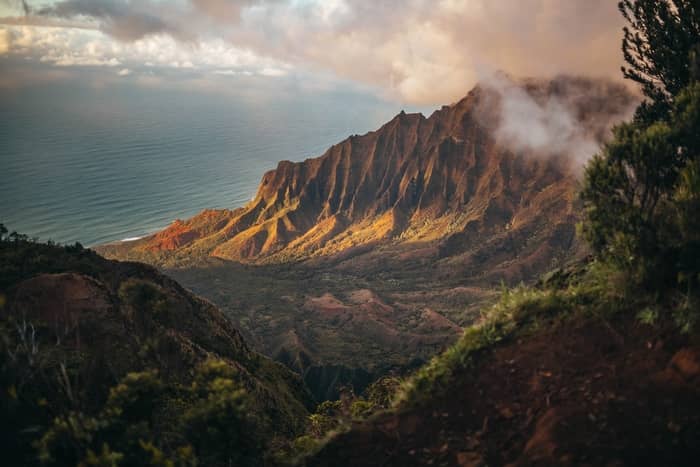
North America
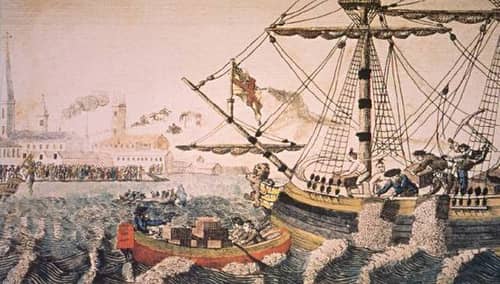
The history of coffee in the United States is not a long one, but it’s a fascinating one.
Coffee is a product of the mountains, and it thrives in tropical forests. But, like many mountain plants, coffee isn’t indigenous to the United States. It took a little bit of work to get this plant growing here.
In the late 1600s, coffee trees were brought to South Carolina from the West Indies. However, they didn’t thrive in the hot, humid climate. This set American coffee cultivation back for a while.
The consumption of coffee in North America, however, was another matter entirely. It began in the mid-1600s when Dutch colonists introduced the beverage to New Amsterdam (later New York). This prompted the appearance of coffee houses all over the New World, but still, tea remained the more popular drink.
If you know the history of the American War of Independence, that changed in 1773 when the American patriots revolted against a tea tax imposed by King George III. This revolt, famously known as the Boston Tea Party, changed Americans’ drinking preference for coffee forever.
By the 1870s, immigrants had successfully introduced coffee trees to Hawaii’s Kona region, where they flourished in Hawaii’s sunny mornings and rainy afternoons. Today, Kona is one of the best places on Earth for growing coffee.
Central America
Did you know that after sugar, coffee trees were the most valuable commodity globally in the 1700s? Everyone wanted them, and everyone wanted to protect them with their lives.
The Mayor of Amsterdam presented a young coffee plant to King Louis XIV of France as a gift, later planted in the Royal Botanical Gardens. In 1723, Gabriel de Clieu, a naval officer, obtained a seedling, which he used to establish Martinique’s first coffee plantation.
This seedling enabled the spread of not less than 18 million coffee trees in Martinique over the next half a century. This seedling is the parent of all plantations in the Caribbean, Central America, and South America.
Brazil
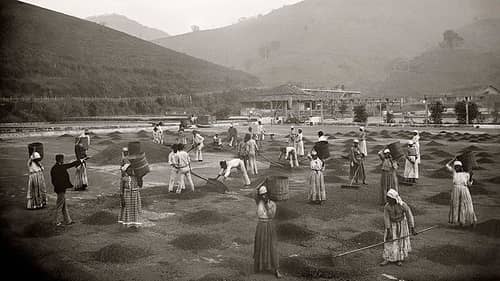
It’s a universal fact that Brazilian coffee is some of the best in the world. You’ve probably wondered why, right?
Well, it all goes back to the man who started it all: Francisco de Mello Palheta. Back in 1720, the Emperor sent him to French Guiana to procure coffee seedlings.
The French were not willing to share. However, his good looks captivated the French Governor’s wife, who gave him coffee seeds hidden within a large bouquet of flowers. With these seeds he set up Brazil’s first coffee plantation.
Since then, Brazil has become world-famous for coffee production with millions of acres of coffee plantations. Brazil’s climate and soil make it ideal for coffee growing; its growers have become incredibly adept at cultivating and drying coffee year after year.
What’s Next for Coffee?
The story of coffee stretches across centuries and continents. From its origins in Ethiopia, coffee was introduced to Europe via the Middle East, where it had been used for hundreds of years.
Did you know that most coffee-producing countries lie in the coffee bean belt, within the Tropics of Cancer and Capricorn? And, that coffee farmers in this region contribute a bulk of coffee produced worldwide with intensive coffee farming?
Interestingly, coffee consumption is highest in America, France, Holland, Germany, Austria, Central Europe, and Scandinavia.
Today, coffee is the most sought commodity after crude oil and has shaped so many habits and aspects of our lives. There’s no doubt that the coffee industry has grown tremendously due to coffee becoming a beloved beverage with a rich and captivating history.
None of today’s modern inventions would be possible without this free-running liquid that gave humankind a very special gift: caffeine. From Seattle to Sydney, to Scandinavia, Japan, and Brazil, it seems that everyone is striving and celebrating to drink better coffee.



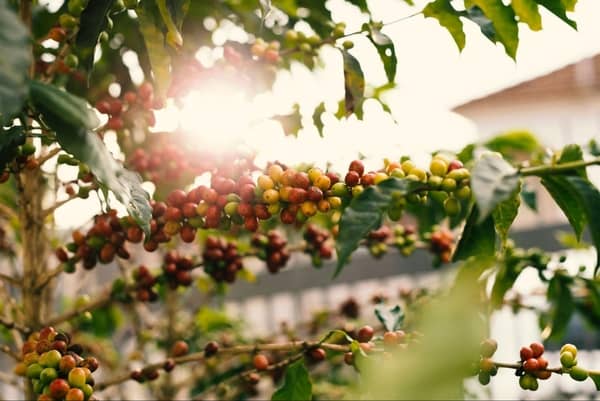

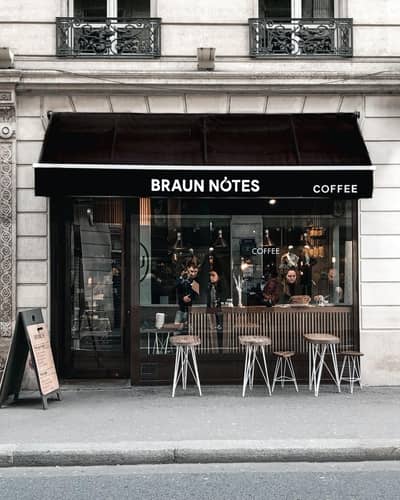



Not true. It was a Yemeni goatherd, a young lad, who observed his goats getting energized when they ate the braw coffee cherries and he took some to his village where they, too, ate them and were energized. They made outdoor fires to cook, etc., and some beans were left on a stone at the fire and the smell astounded them so they ate the roasted beans and someone had the bright idea to mash them, put them in hot water, and the rest is actual history of coffee as a drink. Ethiopians today claim that their beans are 100% Arabica. Think about that. ARAB-ica. It means that Arabica beans are of Arab origin.
Legend says all coffee originates from Ethiopia. But the Arabs one of the first to cultivate coffee. See here – https://www.ncausa.org/about-coffee/history-of-coffee#:~:text=An%20Ethiopian%20Legend&text=There%2C%20legend%20says%20the%20goat,want%20to%20sleep%20at%20night.